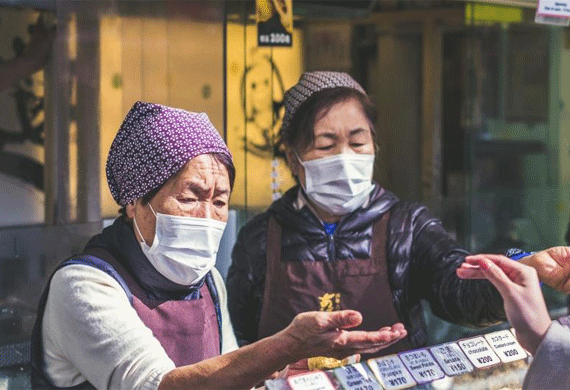
The Glaring Gender Disparity in India's Covid Vaccination Drive
By: Navyasri, Content Writer, Women Entrepreneur
For years India has had a skewed gender ratio. Males outnumber females by 108.18. The female population makes up 48.04 percent of the total population, while the male population makes up 51.96 percent.
The Gender-related Development Index (GDI) assesses achievement disparities between men and women by measuring life expectancy, educational attainment, and income. According to the Human Development Report 2019, India's GDI value is 0.892 (The closer the ratio is to one, the smaller the gender gap), placing it 129th out of 189 countries.
According to the UNDP report 2019, India has a dismal GII value of 0.0501 and a ranking of 122. In India, the Human Development Index (HDI) value for females is 0.549 while it is 0.671 for males, indicating a significant disparity.
This gender disparity is visible at all levels in India, including the country's largest vaccination campaign, ie: Covid vaccination. In both, access to vaccines as well as information regarding its safety, women lag behind.
India began its Covid vaccination campaign on January 16, and as of June 2, 21,85,46,667 doses of Covid vaccine have been administered throughout the country. This includes both the first and second doses. However, a look at the statistics reveals that most Indian states vaccinate more men than women.
So far, the number of men who have received at least one dose of the vaccine is 15 percent higher than the number of women who have been vaccinated. This means that for every 1,000 men vaccinated, only 867 women were vaccinated. This ratio is even lower than India's sex ratio.
The vaccination gap is likely to widen further as we move into the countryside. Vaccine hesitancy will become more widespread as a result of the already existing literacy and digital divide. This will widen the gap by a multiplier effect. Women's lower mobility and decision-making capacity may make them less accepting the vaccine. Socio-cultural factors that are deeply entrenched in the rural landscape will make it even more worse.
Women usually do not know how to register for vaccinations on the CoWIN platform due to digital illiteracy. They rely on the more tech savvy males to complete the necessary tasks. The patriarchal ecosystem that persists in rural areas exacerbates this disparity. Vaccine apprehension among women is exacerbated by myths and rumours about the vaccine's effect on menstruation and fertility.
Due to a lack of information and effective communication advocacy, pregnant and lactating women are hesitant to take the shots. We cannot allow these variables to create inequity in our vaccine policy. Remember that if women are marginalised, especially in the health sector, sustainable development is impossible.
Lactating women were not allowed to be vaccinated against Covid-19 until the Centre gave the all-clear. These restrictions for the lactating mothers getting vaccinated have also added for the gender parity. Now, the center clarifies that it will have no effect on the newborn.
Women have suffered greatly as a result of increased gender-based violence, girls dropping out of school, and job losses in the unorganised sector during the pandemic. Household work has increased dramatically as a result of the frequent lockdowns.
According to studies, women bear 75% of the world's total unpaid care work burden, which includes child care, cooking, cleaning, and caring for the sick and elderly, and this burden has increased by 30% during the pandemic. Women are the primary providers, caregivers, and nurturers of both children and the elderly. Their vaccination should be prioritised because they bear more responsibility and serve as role models for children, particularly girls and the elderly.
The vaccination campaign must be viewed through a gender lens, and equity initiatives for this vulnerable segment of the population must be prioritised. Gender-related barriers must be adequately addressed in vaccine planning and implementation. We need to channel our paramedical staff, such as ASHA and anganwadi workers, midwives, and nurses, who, thankfully, are mostly women.
More incentives should be provided to these health workers in order for them to motivate women at the grassroots level. A greater representation of women at the panchayat level also makes them more effective opinion leaders capable of mobilising women to participate in health communication strategies.
Innovative practises, such as organising vaccination melas to make women feel special on International Women's Day, are the need of the hour. To attract more female beneficiaries, all-women vaccination centres should be established. Mobile vaccination clinics should be encouraged.
Chhattisgarh, Kerala, and Himachal Pradesh are the only three states that have a higher proportion of women vaccinated than men. Meanwhile, Jammu and Kashmir, Nagaland, and Delhi have the highest gender disparities.
Gender inequality is also visible in Uttar Pradesh and Punjab, where men account for more than 56% of those vaccinated.
Other states that are doing well in terms of gender parity include Karnataka, Andhra Pradesh, Uttarakhand, and Goa. Men make up roughly 51% of the total population vaccinated in these states.
The number of transgender people who have received at least one dose of the Covid vaccine is as low as 26,793.
Every level of state and local government must think outside the box in order to attract more women to vaccination clinics.
The impact of a crisis is never gender neutral in history, and Covid-19 is no exception. Gender equity must be prioritised in the Covid-19 response.


.jpg)



